So you’ve lived through an ecological disaster that’s drastically changed the world (or at least some corner of it): the water’s dried up, the bees have disappeared, temperatures are soaring, multiple pandemics ravaged the earth, and the oil reserves have gone poof. Now what? Here are eight books that not only take climate change as a given, but that skip ahead a bit and show us the aftermath of environmental cataclysm. A few even offer some possible solutions…
Permafrost by Alastair Reynolds
Permafrost drops us into a bleak world of 2080: most scientists predict about ten more years of before humanity finally runs out of food and people face a decision between slow starvation and euthanasia clinic. But a group of scientists called “The Brothers” have concocted a last ditch effort to save humanity. Using an experimental form of time travel, they will drop an elderly teacher Valentina Lidova into the mind and life of a younger woman in 2028. Once there, Valentina will need to make tiny nudges in the past, hoping all the while that each change is creating a better future.
There’s a problem, though: in 2028, a young woman wakes from brain surgery to find a strange voice in her head. It makes demands of her, and seems to be pushing her onto a new and frightening path. Should she resist the voice? Or follow its lead into an unknown future?
Buy the Book
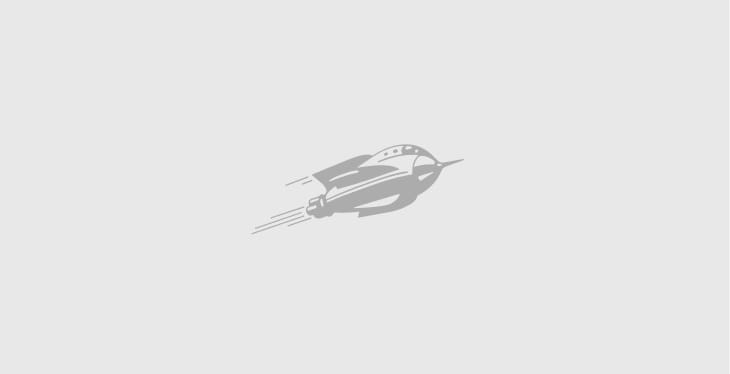

Permafrost
The Water Knife by Paolo Bacigalupi
Paolo Bacigalupi takes us into the future in many of his novels, including The Water Knife, set in an American Southwest that is dying of a never-ending drought. Angel Velasquez is a “water knife”—a saboteur who redirects water supplies to serve his own interests… or, more accurately, the interests of his boss, Catherine Case. Case is working on an “arcological” (architecture + ecology) development in Las Vegas that will be a luxurious self-sustaining environment for those who can afford it. Those who can’t are left in the dust, trying to survive on the supply from the rapidly-drying Colorado River. When a mysterious new water source seems to appear in Phoenix, Angel goes to investigate, crossing paths with a journalist, Lucy Monroe, who risks her life covering the water wars, and a migrant worker, Maria Villarosa, who desperately wants to make it north, where rumor has it rain still falls from the sky. The three soon find themselves caught in a much larger plot, where their lives are under threat from more than just thirst.
Buy the Book


The Water Knife
California by Edan Lepucki
Los Angeles has become uninhabitable (“Wait, it can get worse?” sniffs the New Yorker writing this piece) and a young couple, Frida Ellis and Calvin Friedman, flee to the North. They squat in an abandoned home and eke out a living as subsistence foragers and farmers, when they realize Frida is pregnant. They have to weigh their options: should they attempt to join a “Community”—havens for wealthier survivors—where they would have access to the internet, reliable food, and a measure of safety? How much freedom would they have to sacrifice, and would it be worth it? And in the end, is the Community truly any safer, or is just dangerous in a different way? Lepucki’s novel drops us into an untenable situation and forces us to weigh the lengths we’ll go to for survival in a post-collapse world.
Buy the Book


California
New York 2140 by Kim Stanley Robinson
Meanwhile, on the East Coast, Kim Stanley Robinson’s New York 2140 posits a future New York City that resembles the Venice of our own time. Most of the major trade and culture of the United States is now centered on Denver, but plenty of die hards have stayed in New York. While some people have taken up residence on the top floors of partially-submerged buildings, the wealthy have fled up to Harlem, Inwood, and Yonkers, which remain largely unaffected, leaving those below 46th Street to deal with the worst of the flooding. The book’s action centers on the tenants of MetLife Tower on 23rd Street (just across the park from Stubby the Rocket’s main dock!) which offers boat storage to its waterlogged residents. Robinson’s book takes an honest look at the connections between capitalism and climate change, but it’s also funny, focusing on how humans adapt to extreme circumstances.
Buy the Book


New York 2140
Gold Fame Citrus by Claire Vaye Watkins
Like The Water Knife and California, Claire Vaye Watkins’ novel Gold Fame Citrus focuses on a Southwest coping with extreme drought. In this case, Los Angeles hasn’t seen a drop of rain in years, and the entire region is being swallowed by a growing desert known as the Amargosa Dune Sea. Most people have been evacuated to the East, where life is still a bit more viable, but if you’re the right kind of damaged, like former model Luz, or the right kind of AWOL, like her boyfriend, former soldier Ray, you might not want to be back in civilization where the National Guard watches the borders and everyone is expected to contribute to society. So the two cobble a life together in L.A.—until they find a needy infant and adopt/rescue/kidnap it. Soon the trio are setting out on the Dune Sea, looking for literally greener pastures, and facing dangers they couldn’t even imagine back in Los Angeles.
Buy the Book


Gold Fame Citrus
Who Fears Death by Nnedi Okorafor
Nnedi Okorafor imagines a post-collapse future where magic blooms in a desert. For years, the Okeke people have been enslaved and terrorized by the Nuru. When an Okeke woman is raped, and barely survives the destruction of her village, she decides to walk into the desert and die rather than live under the Nuru’s brutality any longer. But death does not come, and when she gives birth to a baby the color of sand, she decides to try to make a new life with her. She names her daughter Onyesonwu—meaning “Who Fears Death”—and the girl soon proves to be unusual. As a child of rape she is marked by her society as an “Ewu”, expected to live a life of violence. Instead she is stubborn, intelligent, and magical, learning to shapeshift and travel to spiritual realms before she reaches her teens, and finally embarks on a quest that will lead her back into the desert. Her destiny is tied to the violent history of her people, and to the land and its destruction—but will her quest free her or doom her?
Buy the Book


Who Fears Death
Maddaddam by Margaret Atwood
Maddaddam is the final book in a trilogy by Margaret Atwood—after the bioengineered pandemic and chaos depicted in Oryx and Crake and The Year of the Flood, Maddaddam follows Ren and Toby as they work to establish a new community. They join with other survivors (some of whom also showed up earlier in the trilogy) and try to create decent relationships and foster hope among the ruins of civilization. The book hops from the present through a series of flashbacks that show how the upper class knowingly trampled the environment, before returning us to the post-collapse present and asking if it’s even possible to rebuild society in a healthier way.
Buy the Book


MaddAddam (MaddAddam Trilogy #3)
The Bone Clocks by David Mitchell
The Bone Clocks takes place within the David Mitchell Ever-Expanding Universe. Characters from past books show up in new roles, and if you’ve been reading Mitchell for a while, you’ll notice the foundations of the world itself starts to shake. The Bone Clocks more-or-less follows the life of one Holly Sykes, from the age of 16 on up, checking in every few years from the points of view of friends, lovers, and even enemies. Because we know her and her circle so well, the final section of the book makes for a brutal read: an off-page technological collapse is followed by a failure of the world’s oil supply, and by the time we reunite with Holly, society has been jarred into a much more primitive state. We have to watch a woman we’ve known since her teens cope as her village descends into a landscape out of a Mad Max movie. But, as in Mad Max, where there are still decent people there is hope, and Mitchell doesn’t entirely crush our souls. Just most of the way.
Buy the Book


The Bone Clocks










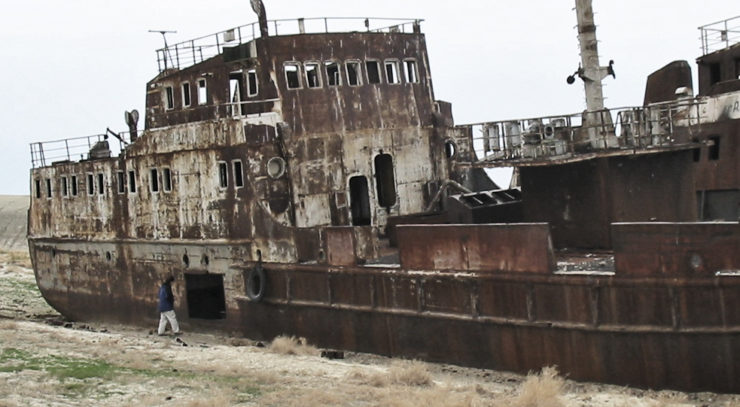
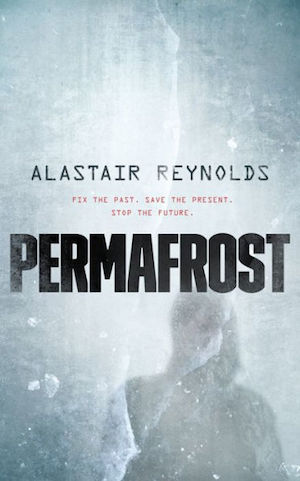
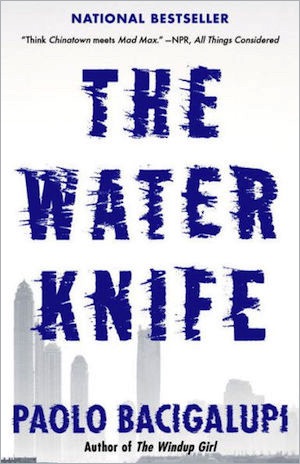
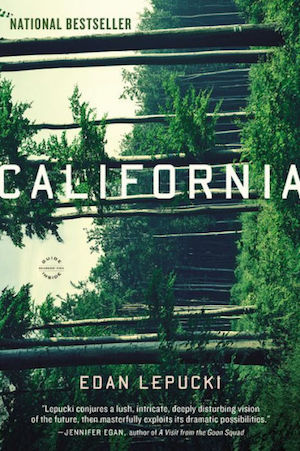
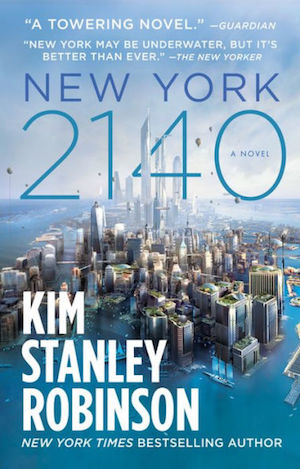
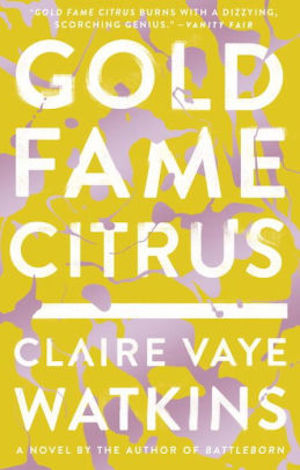
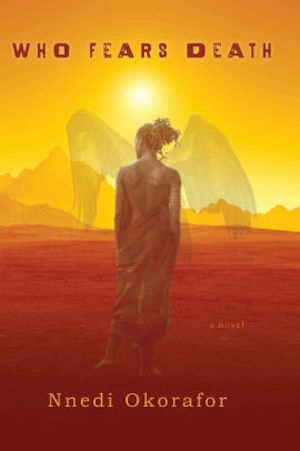
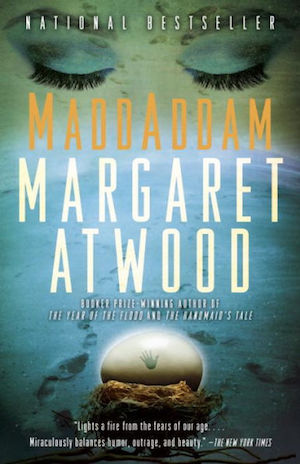
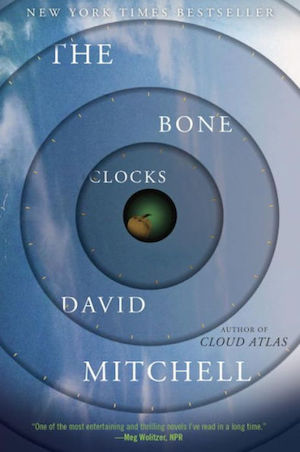
You might also want “The Knowledge: How to Rebuild Civilization in the Aftermath of a Cataclysm.”
“Lewis Dartnell proposes that the key to preserving civilization in an apocalyptic scenario is to provide a quickstart guide, adapted to cataclysmic circumstances. The Knowledge describes many of the modern technologies we employ, but first it explains the fundamentals upon which they are built. Every piece of technology rests on an enormous support network of other technologies, all interlinked and mutually dependent. You can’t hope to build a radio, for example, without understanding how to acquire the raw materials it requires, as well as generate the electricity needed to run it. But Dartnell doesn’t just provide specific information for starting over; he also reveals the greatest invention of them all—the phenomenal knowledge-generating machine that is the scientific method itself. “
https://www.amazon.com/Knowledge-Rebuild-Civilization-Aftermath-Cataclysm/dp/0143127047
Many people obviously liked New York 2140. After all, it was a Hugo nominee.
However, I can’t count myself in with all those people. I found that Robinson took far too much of the book preaching, and not enough of the book on things like characters and plot. Robinson, when he’s focused on the story, is a fine author. But this wasn’t (in my mind) a great example.
I’m surprised that Carrie Vaughn’s Bannerless saga isn’t on this list. True, the world has already recovered, somewhat, by the time of the first novel, but the short story prequel certainly dealt with how to survive and rebuild.
Tossing in Sam Miller’s Blackfish City and Ursula Le Guin’s Always Coming Home (my LoA copy of the expanded edition arrived last week), Miller’s for the believable “still living through it” scrabbling and despair and Le Guin for a culture making worthwhile lives in the teeth of “the environmental collapse was so long ago we don’t have records that explain what happened, but we’re still dealing with a high infant mortality rate and a couple of variants of primary progressive MS as one of the most common causes of death”.
As an Arizona native, reading The Water Knife a few years back seriously made me consider moving to my in-laws out east. If not now, sometime when my children are older so they can be established away somewhere that has a brighter (wetter) future. That book was great as a work of fiction, but the message it sends is very clear to desert dwellers.
Oryx and Crake is my favorite of the trilogy. Maddaddam definitely benefits from the build up, so read them all!
I’ll add Book of the Unnamed Midwife by Meg Elison and the surprisingly good Year One by Nora Roberts (didn’t know she wrote anything but romance). And the exceptional Emberverse saga by S M Stirling, although I felt it should have ended with The Given Sacrifice.
Basically everything Paolo Bacigalupi alls under this category, not just The Water Knife. I was expecting to see Shipbreaker in its place.
alls = falls
No list of books about ecological catastrophe would be complete without some J.G. Ballard, although, of course, he was never optimistic about rebuilding after such a catastrophe…
Second the recommendation for Bannerless by Carrie Vaughn. I’d disagree that it depicts a society mostly recovered. It’s a stable society, in part because of the pre-collapse technological artefacts. One of the reasons they are so paranoid about maintaining a sustainable existence is they are aware these will eventually break down irreparably, and they are at least a few generations away from being able to create the tools to create them, never mind make replacement artefacts. They know it’s going to get slightly worse before it gets better.
And that’s even before you consider that they are only a few enclaves of people clinging to existence on the west coast of continental North America. There’s a few scavenger communities in the ruins of the cities, and there’s is zero contact with any other community in the rest of the world, whether it be the rest of the continent or across the ocean. YMMV, but that’s hardly what I’d call “recovered”.
More women and POC:
Trail of Lightning by Rebecca Roanhorse
Gods, Monsters, and the Lucky Peach by Kelly Robson
The Broken Earth trilogy by N.K. Jemisin
With Brexit looming, I’m less considering the article and more the article title… with a nod to Wells’ Time Traveller, what books would people recommend I get?
forecasting the complete collapse, I’m going with a book on bricklaying, but then I’d also need one that teaches how to make bricks and mortar. And I’d guess the same for roofing.
Then we’ll need to think about farming in a post-urban environment (I believe something like this is already happening currently in parts of Detroit). And blacksmithing.
I guess frontier-style medicine should go in there as well.
Any essential subject I’ve missed? And what books would people recommend covering these topics? (Assuming no access to the internet or electronics).
@12/WillMayBeWise: Edible wildplants. Hunting and laying traps. Building a fire. Building an oven. Making clothes from hides and wool. Carving. Pottery. Making ropes and paper.
@12
You could do worse than reading the Foxfire Books. I think some of them are available free online. Also, The Way Things Work. Of course, the time to start reading them and practicing was a couple of years ago. During the catastrophe is no time to be hitting the books.
@13/JanaJensen – starting to think my education is a bit broader than I realised, as I can already do (at a basic level) the stuff on your list. I remember teaching the younger boys at Scout Camp how to harvest clay from a stream bed, make pinch pots and then bake them in the camp fire…
I also know the basics on how to make a clay kiln to properly fire pottery, but have just realised I can use a potters wheel, but have absolutely no idea how to make one…
@14/wiredog – yeah, those look the business!
@15/WillMayBeWise: Harvest clay from a stream bed! How cool is that? Sometimes I regret that I’ve never been to any Scout Camps.
@17/JanaJansen – yeah, those are good memories. :)
Of course, it’s rather old, so it’s not likely it’d be in an article like this. But there’s The Postman, by David Brin. Brilliant look at the topic. In fact, the late 60s, 70s and into the 80s had a whole host of eco-disaster novels that looked pretty thoroughly at this topic.
some other books I would suggest
stars reach by John Michael Greer
the windup girl by paolo bacigalupi
the death of grass by John Christopher
The MaddAddam trilogy killed my optimism softly with fun sscience — Year of the Flood is my favorite — but I don’t feel inclined to read the others here. Somehow they all sound horribly plausible to the point of inevitability and the news headlines sound more like the every day. That said, I can see the appeal of stories where some people actually survive ecological catastrophe. Though these books mostly sound like they take place during said long-term catastrophes — drouggt, flood, etc. — not after them. I guess you mean after civilization as we know.it has been torn asunder. Still, that’s more than some of us can hope for. Here in the northeastern US, some people (like the environmental organization I work for) are quite seriously anticipating a vast influx of “climate refugees” from harder-hit places and trying to build a more reslilient region that can support all of us — but others are quite seriously certain that they personally will definitely die of heatstroke or starvation (barring some violent untimely death, obviously). So a story where some people do survive might be an improvement. Me, I glance at headlines about impending ecological and societal collapse and wonder how anyone can actually read those texts, let along write them, and still have any will to live. But fiction and nonfiction alike have long shown the horrors that individuals, and maybe even communities, may be able to survive. /ramble
@21/AeronaGreenjoy – then I’ll refer you again to “Bannerless” and the sequel “the Wild Dead” by Carrie Vaughn. They are set a couple of generations (a handful of years past living memory) after the catastrophe(s) that destroyed global civilisation, but are very hopeful, with the survivors apparently successfully building a sustainable society that’s gradually reclaiming what was lost.
Once, when intervuewed about MaddAddam (the book, iirc, but possibly the series), Atwood advised readers to “Keep hoping. It’s a chore.” But it’s unclear if this means we should hope that humanity at large will survive its own atrocities, or that it won’t. By the end of the series, the prevailing message feels more like the latter. The flashbacks show that before humanity was (apparently) wiped out by the most environmentally-gentle apocalypse possible, the world was a depraved free-for-all of sanctioned sadism and unrestrained capitalism amid environmental collapse, where the rich did absolutely anything they wanted and everyone else did anything they could to survive — with enough complexity, dark humor, and beauty to make it more believable than any other dystopia I’ve encountered. After the “waterless flood,” the planet began to heal and its few humans to live better lives among the non-humans for whom it had been cleansed. Which future would we rather hope for?
That’s why I generally steer clear of author interviews, especially Atwood, because sometimes they really put me off reading their works. The author admitting that their writing is so little optimism in the narrative that maintaining hope is a “chore” means I have no interest in reading it.
as to what to hope for: there are days when an apocalypse wiping out most of humanity is horrifying. All too often The feeling is more along the lines of “meh, we have it coming.”
Yeah, “chore” iplies that a thing should relatively easy to do on a regular basis. Mustering hope that humanity, and/or.Earth’s nonhuman life, might not be in more-or-less immindent danger of annihilation is a very difficult task, sometimes impossible. But sometime it has to be attempted, to keep me going. And for me personally, it helps to be told that I should do so and try to practive doing so more often. Though it helps more to be given a reason as well, especially as a counterpoint to a dystopian or apocalyptic story. Atwood isn’t the most helpful for that. I do better with the writings of Barbara Kingsolver (in the past, anyway), Rebecca Solnit, and Brandon Sanderson. In Hope in the Dark, Solnit points out that the people most in danger are often the ones most galvanized to action instead of incapacitated by despair. Sanderson’s Stormlight Archive series isn’t about anthropogenic ecological collapse on Planet Earth, but it’s the most inspiring portrait of heroes wirh depression or other mental illnesses stricing to live and love and fight for humanity in the middle of a planetary apocalypse. As one of them tells another: “Storm might be coming, but people still need to eat. The world ends tomorrow, but after that, people are going to ask what’s for breakfast. That’s your job.” The belied that there might be a tomorrow after the world’s end, where rhere will still be people and you might be alive and able to help them survive…that’s hope.
/tangential ramble
@15/ WillMayBeWise,
I envy your skillls. But would you be able to make a bone needle? Thinking it would be difficult to make clothing without one.
Nope, and I’m a terrible bricklayer as well, so I’d need someone to do that for me: and this community.